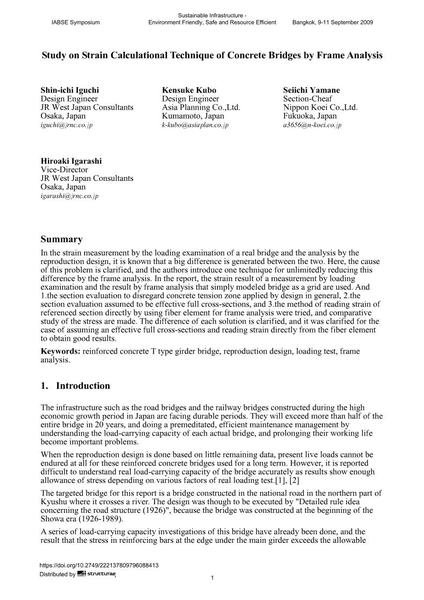Study on Strain Calculational Technique of Concrete Bridges by Frame Analysis

|
|
|||||||||||
Détails bibliographiques
| Auteur(s): |
Shin-ichi Iguchi
Kensuke Kubo Seiichi Yamane Hiroaki Igarashi |
||||
|---|---|---|---|---|---|
| Médium: | papier de conférence | ||||
| Langue(s): | anglais | ||||
| Conférence: | IABSE Symposium: Sustainable Infrastructure - Environment Friendly, Safe and Resource Efficient, Bangkok, Thailand, 9-11 September 2009 | ||||
| Publié dans: | IABSE Symposium Bangkok 2009 | ||||
|
|||||
| Page(s): | 146-155 | ||||
| Nombre total de pages (du PDF): | 8 | ||||
| Année: | 2009 | ||||
| DOI: | 10.2749/222137809796088413 | ||||
| Abstrait: |
In the strain measurement by the loading examination of a real bridge and the analysis by the reproduction design, it is known that a big difference is generated between the two. Here, the cause of this problem is clarified, and the authors introduce one technique for unlimitedly reducing this difference by the frame analysis. In the report, the strain result of a measurement by loading examination and the result by frame analysis that simply modeled bridge as a grid are used. And 1.the section evaluation to disregard concrete tension zone applied by design in general, 2.the section evaluation assumed to be effective full cross-sections, and 3.the method of reading strain of referenced section directly by using fiber element for frame analysis were tried, and comparative study of the stress are made. The difference of each solution is clarified, and it was clarified for the case of assuming an effective full cross-sections and reading strain directly from the fiber element to obtain good results. |
||||
